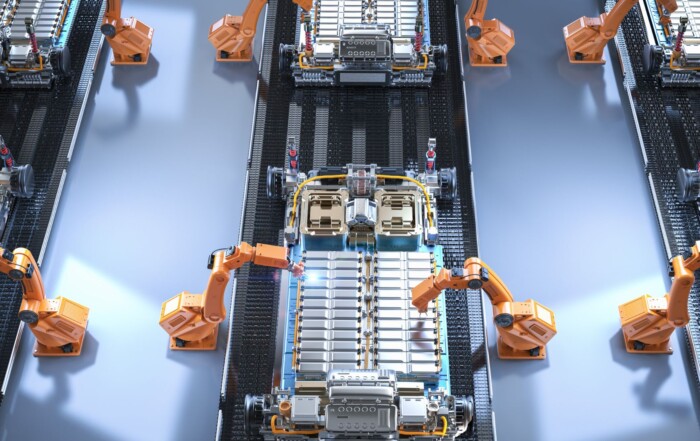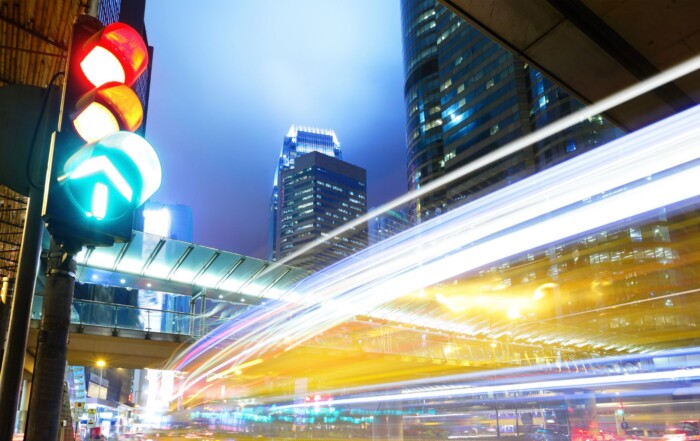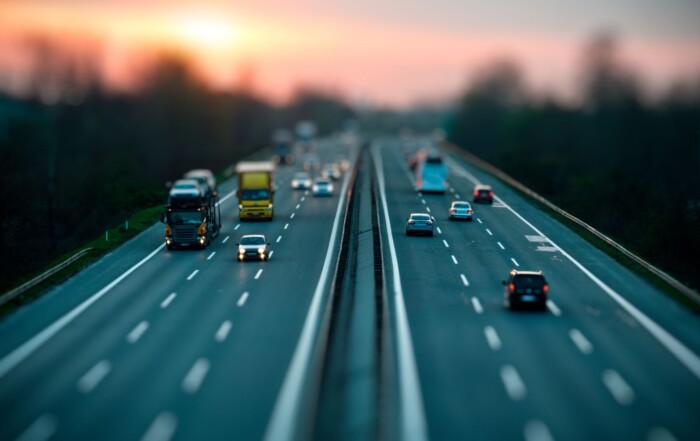City, Radar, Air
Lower Emissions through Traffic Management
Cities are bursting at the seams worldwide. Urbanisation is causing high population densities and number of established industrial companies to continue growing. In step with this, traffic volumes are skyrocketing. The metropolitan areas are reaching their limits. Some metropolises have reached levels equivalent to certain whole countries. Agglomerations such as Munich, Stuttgart or Cologne in Germany are particularly affected.
On the search for solutions
Transport burdens our environment through particulate matter, nitrogen dioxide, and greenhouse gases such as carbon dioxide. Due to the enormous excesses, major cities are taking appropriate measures: bans on diesel vehicles have been introduced. Experts envision a whole array of measures in order to re-attain a zero balance in cities. In addition to lower vehicle emissions, they demand a strengthened public transport network, call for increased bicycle use and rely on modern car-sharing concepts. Another important aspect is traffic optimisation.
Managing traffic efficiently
Optimum traffic management reduces emissions: the less halting traffic, the less exhaust fumes. Traffic control measures to this end minimise congestion and stop-and-go. Less starting and braking also reduces the noise level. To implement efficient control, precise and extensive knowledge about the individual traffic situation is needed. Traffic statistics are generally collected with technical assistance.
Technical support via radar
Radar sensor technology has proven itself for use in transport over many years. The robust technology can be used under all weather conditions, ensures anonymity, and offers a large range, making it ideal for use in road traffic.
In traffic detection via radar, antennas emit electromagnetic waves. The vehicles reflect the emitted impulses. Through appropriate evaluation, the signals received provide information about speed, distance, angle, object characteristics, and size, as well as the direction of movement. Radar finds out where the vehicle is located, how fast it is, in which direction it is moving and which vehicle class It has. These data provide the basis for the information required for reliable traffic counting and statistics, which assist with urban planning and traffic flow analysis.
Multitasking is required
Traffic technology relies on increasingly complex systems. The increasing traffic volumes place high demands on the technology. All information should be available simultaneously and in real time. The products must tend to an increasing number of tasks in road traffic. In particular, crossing management challenges outdated systems.
Today, true multitasking talents are required to maintain an overview of the numerous road users and to cover as many functions as possible in a single system. A great challenge for radar is the simultaneous detection of waiting and driving cars. Only the most advanced traffic radars can impress with their performance. This sensor system determines with extreme precision what is happening on the crossing and in its surroundings. It detects the vehicles at the stopping line and provides information about where traffic is getting congested and how long it will take. They calculate the approximate arrival time at the crossing and waiting times based on speed and distance measurement. The system determines rush hour times and congestion peak values via long-term evaluations. This information provides the basis for controlling traffic lights in real time and automatically.
The systems also record the lane changing of individual vehicles as well as traffic regulation violations, such as unauthorised turning manoeuvres and running red lights. The sensors attribute the detections to a particular class (lorry, passenger car, delivery van, bicycle, or person) and associate them exactly to a given lane. Thanks to the large detection ranges of radar technology, they already recognise from a great distance whether an approaching object is a lorry or passenger car. They also take account of vehicles stopped in the emergency lane, accidents, or breakdowns.
Traffic control for lower emissions
Thanks to the knowledge gained from radar-based traffic monitoring, traffic can be efficiently controlled. As a rule, the radars are coupled directly with traffic light systems or digital display panels, in order to steer vehicles through the city efficiently and efficiently. Traffic is brought under control by guiding it onto alternative routes in good time. The avoidance of congestion and thick traffic is an important measure to reduce emissions. But the aim is not just less traffic jams. It is also possible to redirect certain vehicle types or actively impact their driving behaviour. For an environmentally friendly driving style, it may be sensible to temporarily change the green phase of a traffic light: the radar recognises a lorry approaching the crossing and makes the light stay green longer. The lorry then does not stop, does not need to restart again and thus reduce its emissions. Thanks to the figures provided by the radar system regarding the current traffic volume, electronic street signs automatically display an appropriate speed limit.
These are only a few options for emission reduction made possible by the complex radar systems. Intelligent traffic engineering is, of course, not just about solving the emissions problem. But it forms a necessary basis to quickly introduce initial measures to improve the emissions situation and to easily implement them in existing traffic situations.
Traffic of the future
Efficient traffic management is a standard in modern cities. The major arguments are: less stress for travellers, better air quality, and less noise. Although optimum traffic control is not enough on its own to ensure a green city, it serves as an important tool for achieving this goal.
Radar technology is a straightforward solution. It is weather-independent and maintenance-free and provides precise measurement results. These properties lend the technology excellent reliability, which is essential for safe traffic control. Another advantage of radar is that the systems can be adapted to the existing infrastructure. In contrast to induction loops, no elaborate construction measures or changes to existing road traffic are required.
From an environmental perspective, the use of radar sensors plays a further important role for road traffic. The detection of road users contributes to improving road safety. Combined traffic technology triggers important warning signals for accident prevention based on radar information and thus protects cyclists and pedestrians in particular. With regard to autonomous driving, a welcome increased degree of safety is to be expected.
Advances in technology are progressing quickly and have exciting developments in store. In the urban future, clever systems will impact traffic, autonomous driving will become a reality, and sensor-based communication between cars and traffic infrastructure will offer greater comfort and safety. The use of highly developed radars for efficient and environmentally conscious traffic management is a first step towards smart cities.
picture: ©tampatra – stock.adobe.com
Share this Content
Radar for Traffic Applications
Reliable vehicle detection with traffic radars
In transport, radar technology boasts a wide variety of applications. Radar is predestined for transport monitoring and has been established for many years as an outstanding technology solution in the traffic sector. A typical example is police radar traps. However, also more complex applications such as traffic assessment and statistics for intersection management can be achieved using radar-based vehicle detection.


